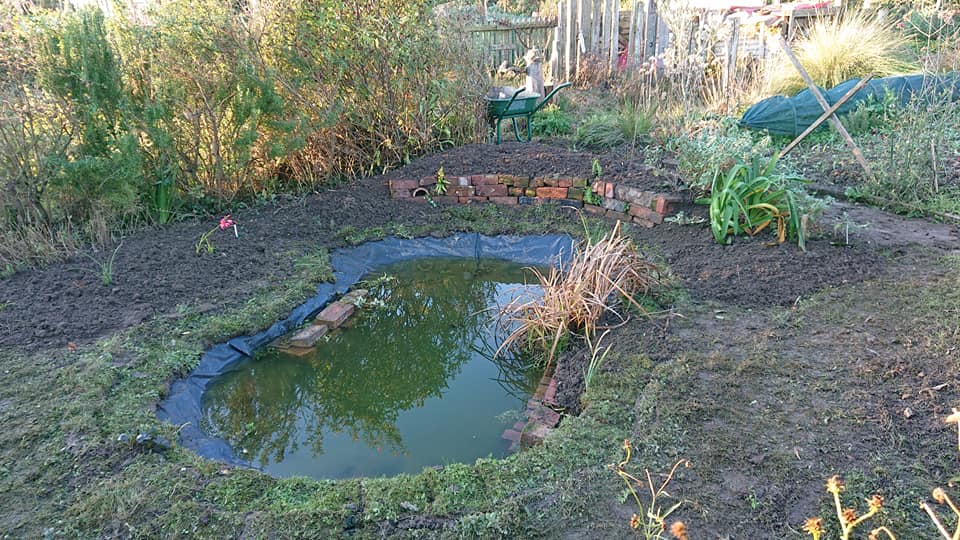Ponds are great!
As well as providing vital habitat for our native amphibians, ponds also support a diversity of other native wildlife including reptiles (especially grass snakes), invertebrates and provide a vital water source for wild birds and mammalian visitors. However, pond creation can be a daunting task, and people often ask for help with constructing a wildlife pond.
One of our Norfolk volunteers, Andrew Slater has kindly shared his experience of creating a wildlife pond on his allotment with us. We love his thoughtful and considered approach, and that he is using rainwater to full the pond (low in nutrients) and collecting local native seed and seedlings for the edges, thereby avoiding inadvertent introduction of non native or invasive species. We have featured his experiences here:
(Please note, before putting a pond on your allotment, always double check with your allotment association that this is allowed, as rules can vary from site to site).
Construction of a new wildlife pond and a low brick-faced bank was undertaken in late autumn 2019 on my allotment in North Norfolk. The allotment is two plots wide, each approximately 6 metres wide and 30 metres long, either side of a central path. The new pond and conversion of surrounding grassland is an extension of habitat for UK native widespread amphibian and reptile species including: common lizards, slow-worms, common frogs and toads and smooth newts.
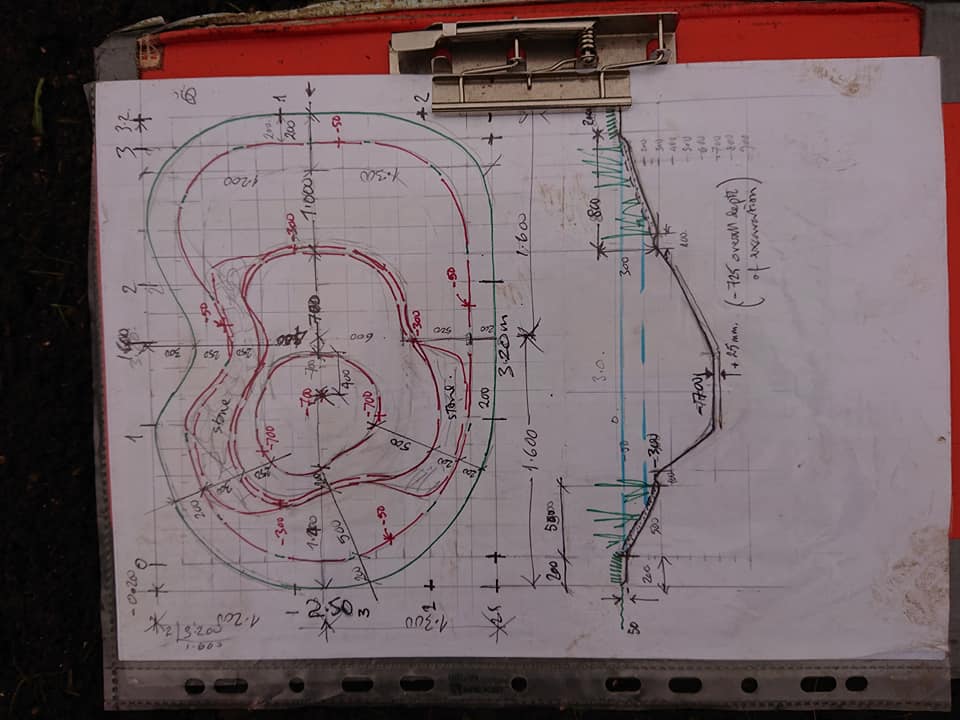
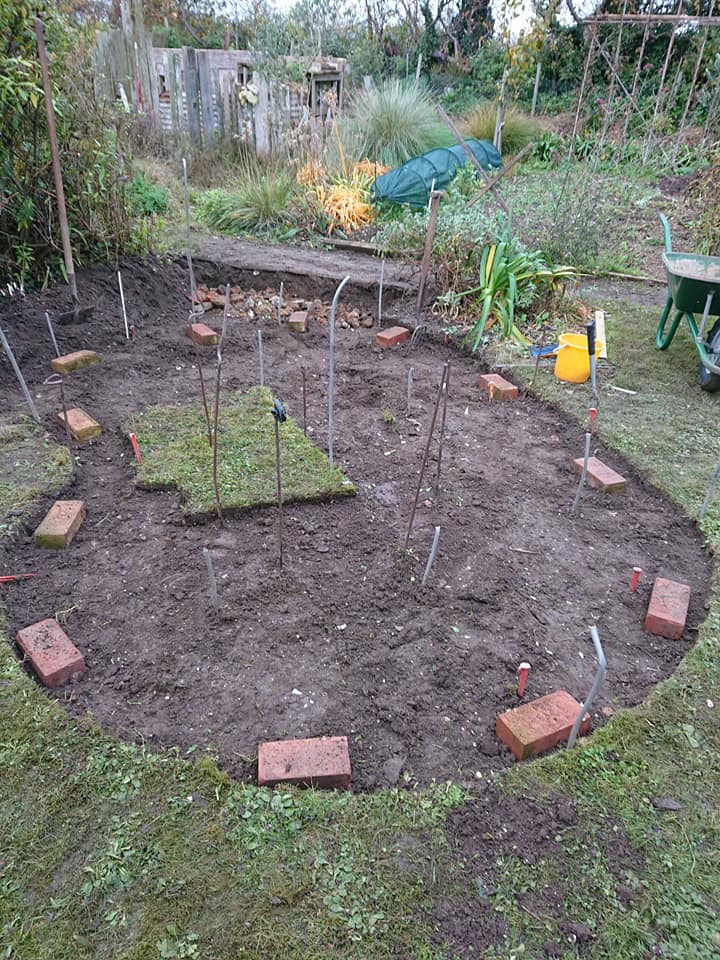
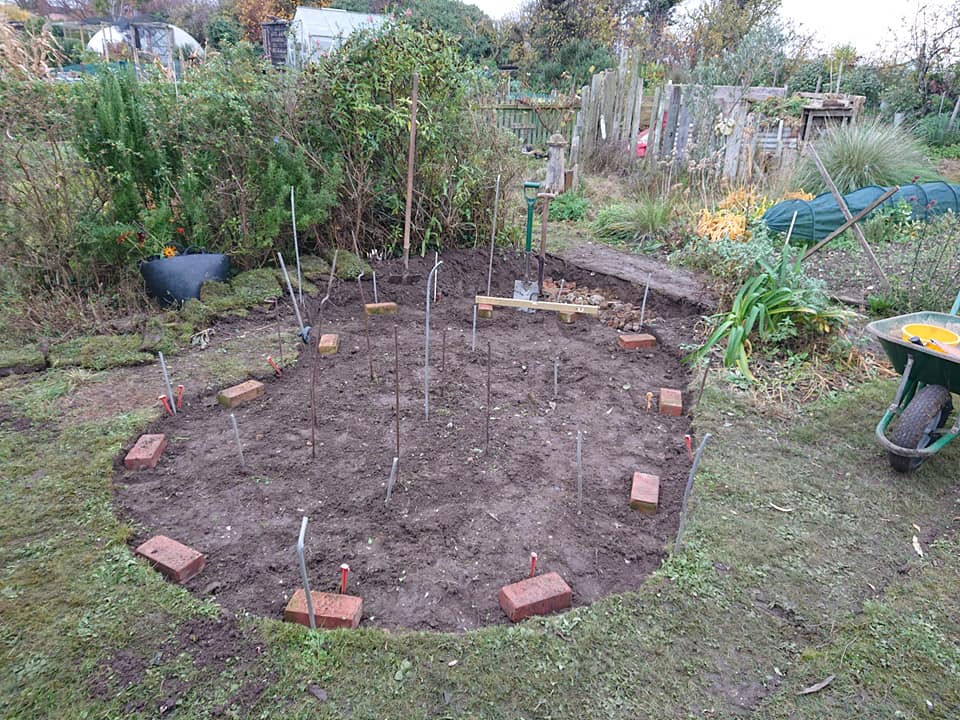
1. Plan your pond. Ideally have a deeper area to prevent it drying out completely during spring and early summer when amphibians will be breeding and spawn/tadpoles will be present in the pond.
Include several broad shallow shelves and gently sloping sides. In this case the new pond is about 3.5m x 2.5m overall with a maximum depth of 700mm. The shallow areas slope from water level at approximately 50mm below the surrounding ground level to 300mm deep. The narrower shelves at 300mm depth have been partly covered with stacked bricks to provide niches for amphibians and aquatic insects and anchorage for the root system of marginal plants. There is a smaller area at an intermediate depth of about 500mm.
2. Remove the surface turf (keep in a nice damp spot for use later!)
3. Start to add in bamboo canes to act as markers
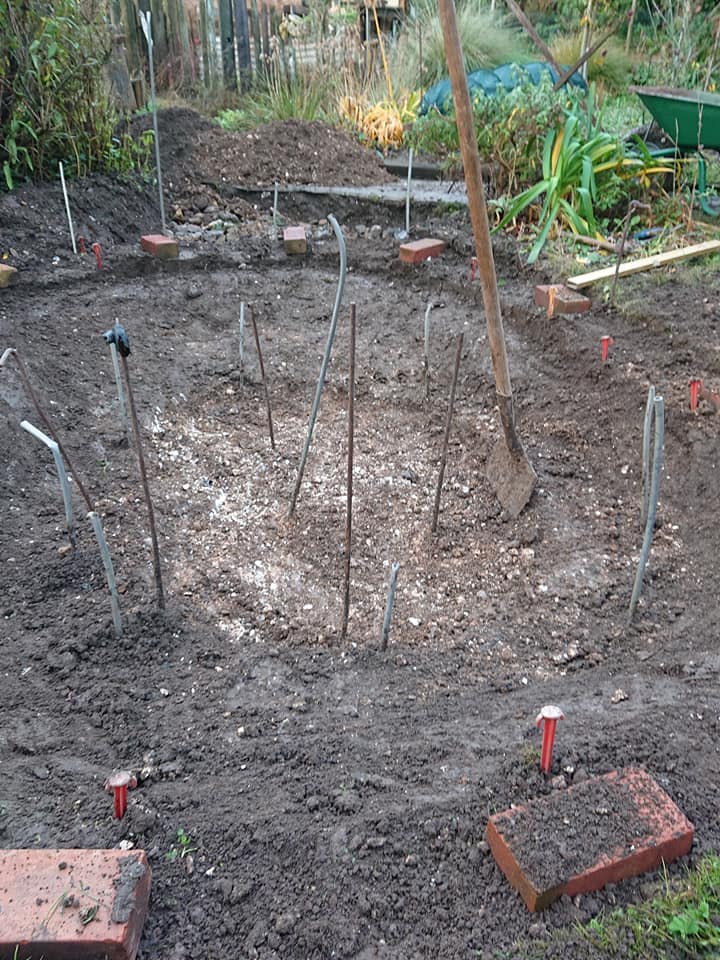
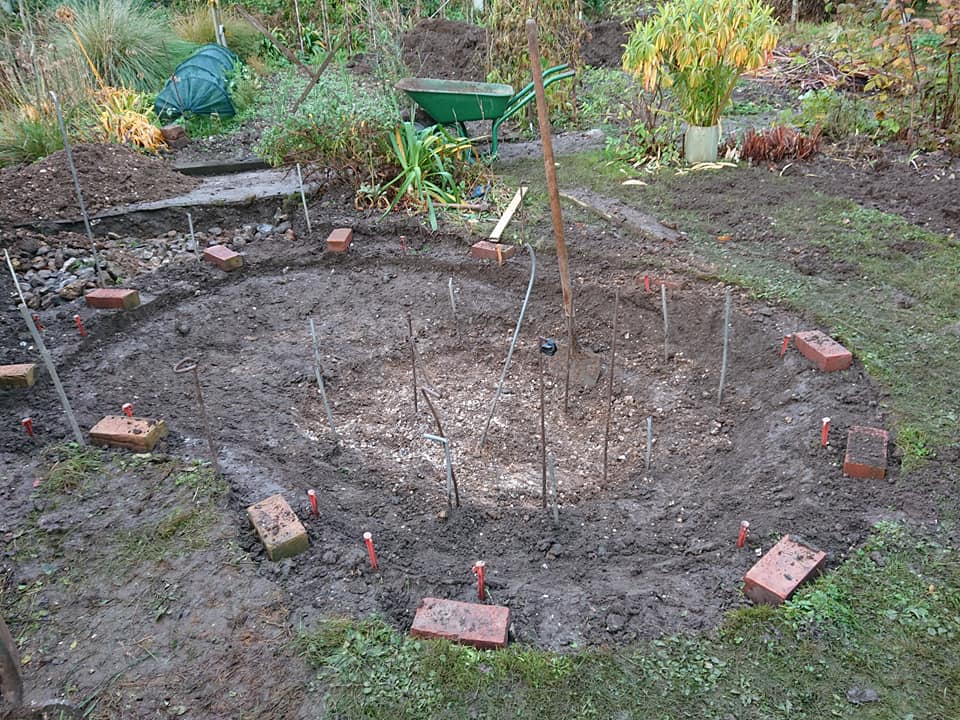
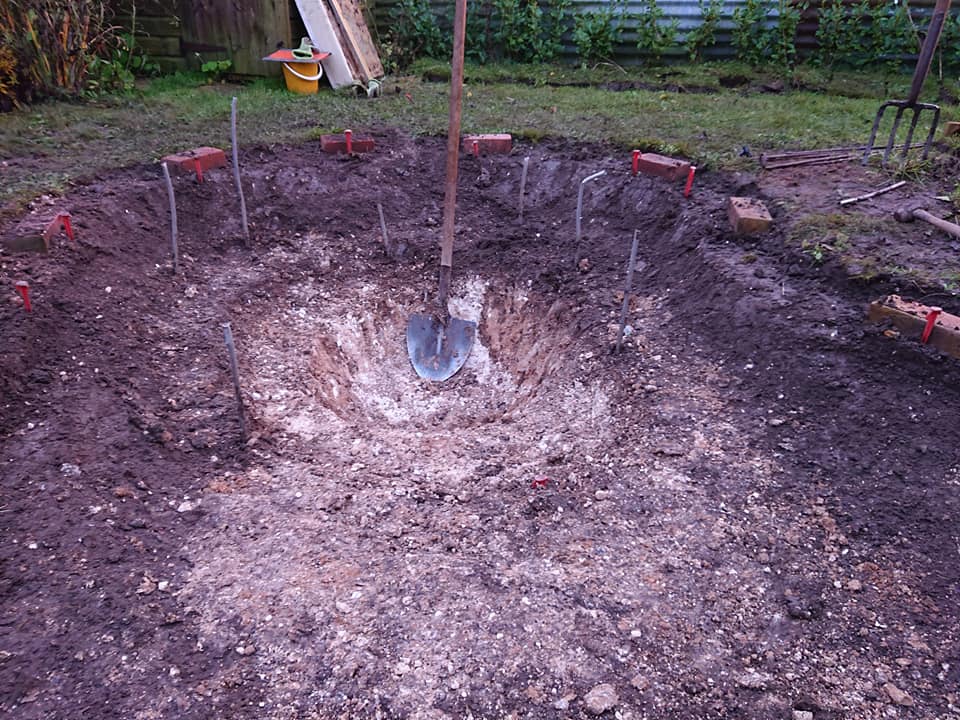
4. Excavate according to the plan - you can use a spade (or a small digger for a larger pond). Use canes to mark out different depths, and a spirit level to ensure the pond is level. Include a long gently shelving side and a series of broad shelves.
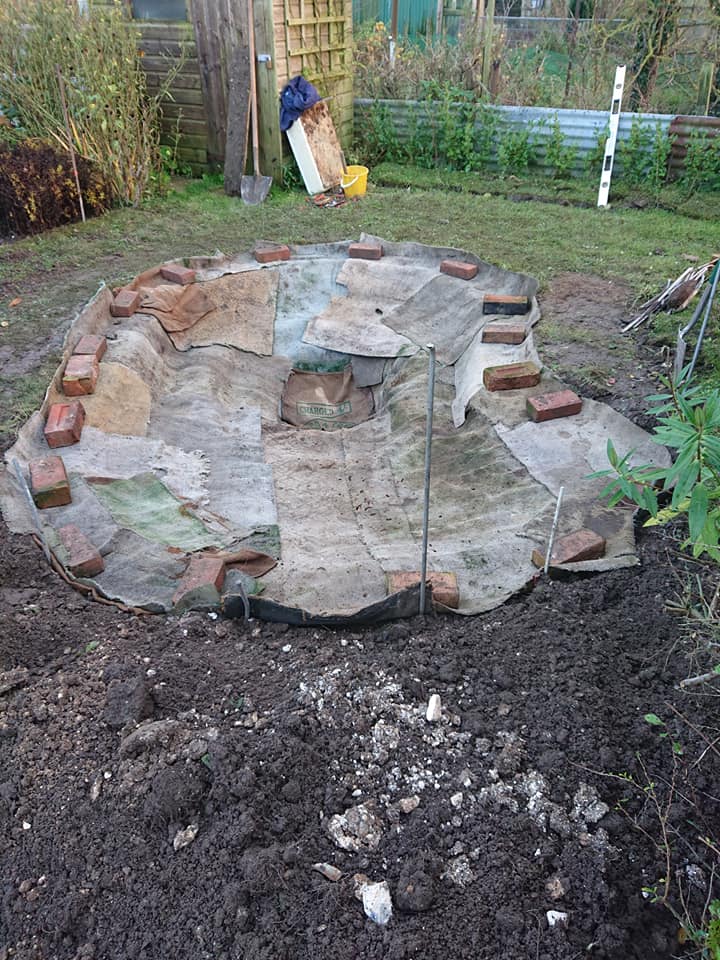
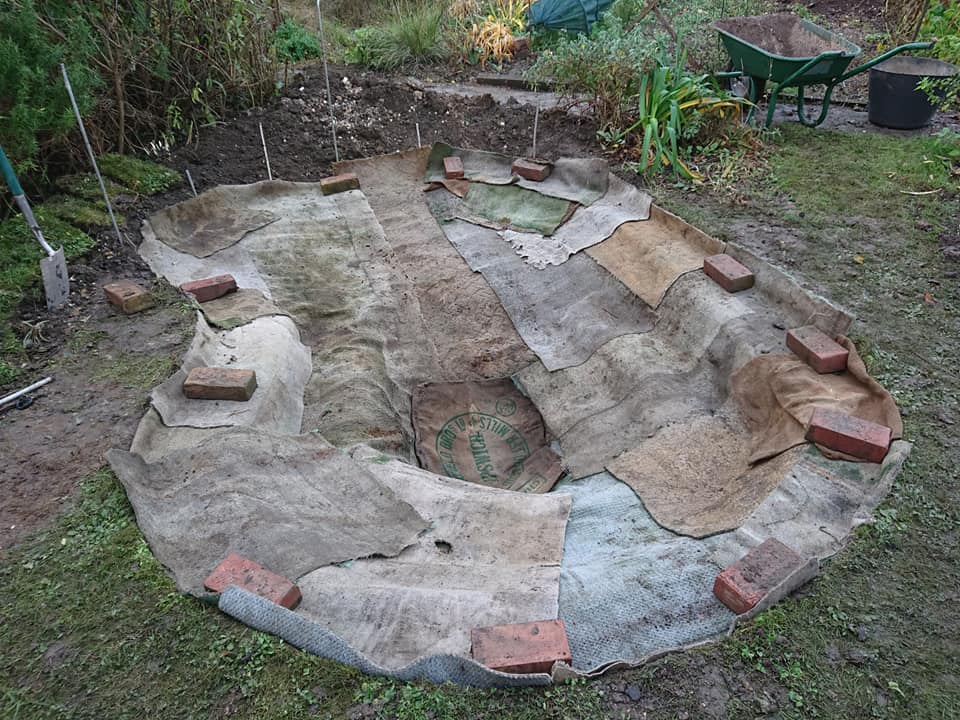

5. Once the hole is dug and the contouring is complete, check the base and sides for any sharp stones or other projections that could tear your liner. As an added protection we recommend that you line the pond with a layer of underlay (or hessian sack) - from 60 - 200 gsm This will protect the liner from damage and prolong its life.
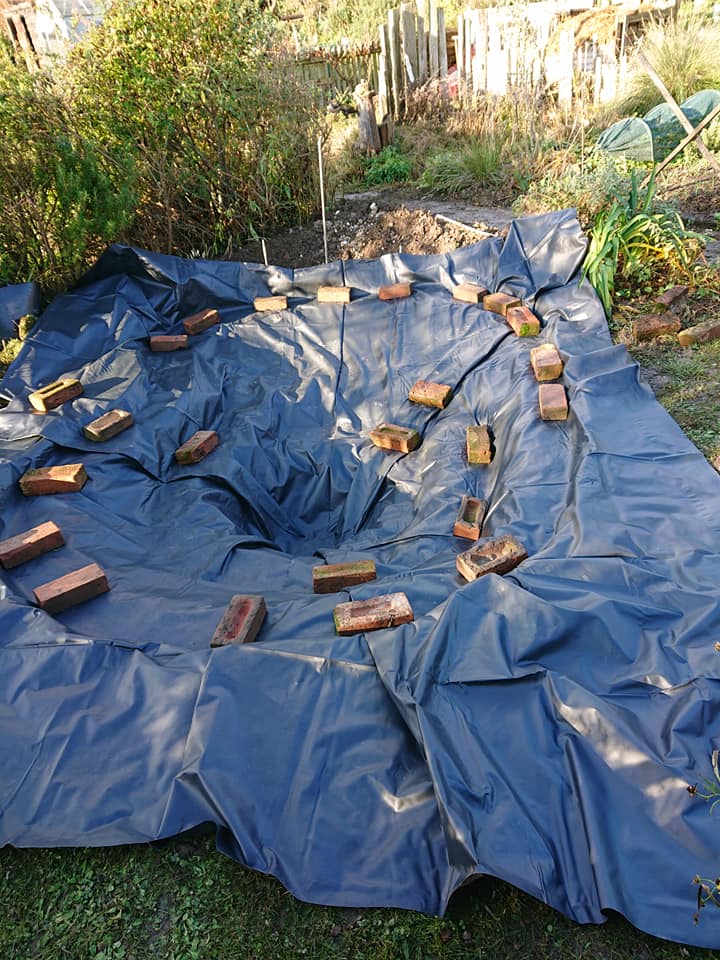
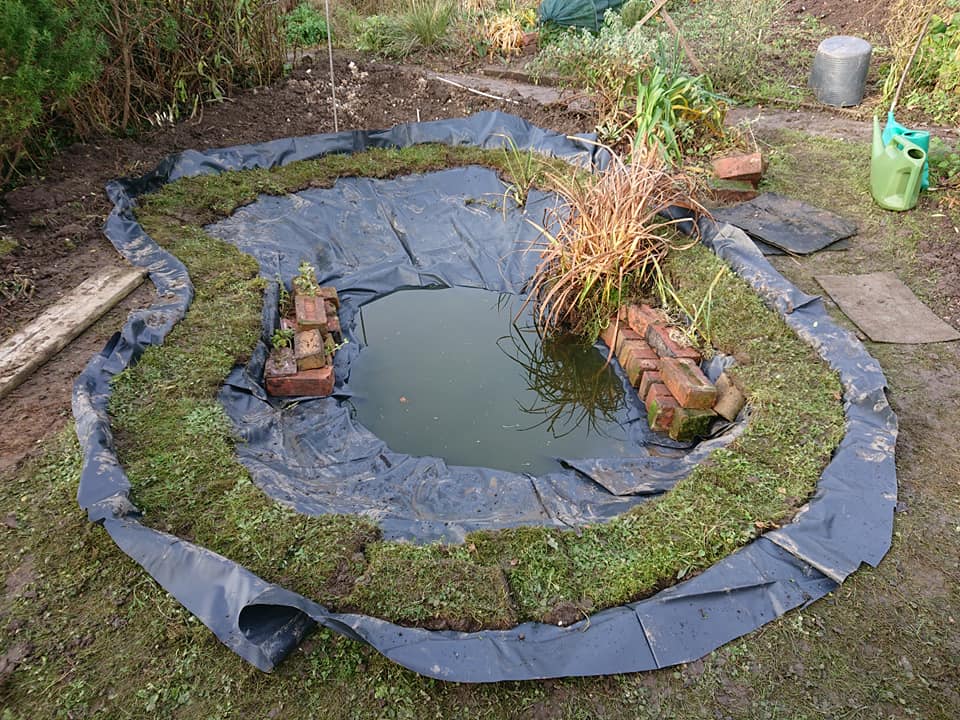
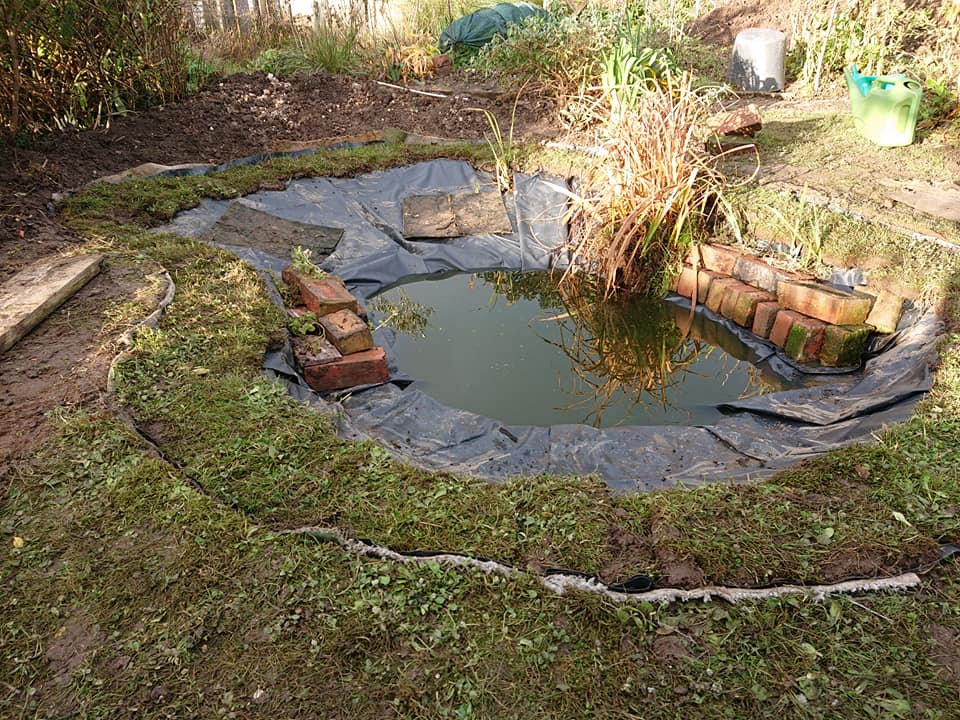
6. Line the pond with a good quality butyl/Ethylene Propylene Diene Monomer (EPDM) liner (avoid builders' plastic). A better quality liner (at least .75 mm thick) will enable your pond to have a longer life - you don't want to spring a leak just a few years on, and have to replace it. Be generous with the liner, do not stretch it too tight, and ensure that there is plenty of overlap before you fill it.
7. Fill with rainwater - this is low in nutrients, perfect for a wildlife pond. This process may take some time (unless you have plenty of water butts, but is worth the wait. Tap water should be avoided wherever possible as it is high is phosphates and nitrates and will encourage algal bloom.
8. Similarly, do not add soil to your pond - this will also introduce nutrients. If you want a substrate use washed sand or gravel.
7. Once the pond is half filled tuck the edges of the liner under the turves reserved from the initial turf-stripping operation. This gives a tidy edge, protects the liner from tearing, and also from UV/sunlight which can make it brittle. Here Andrew has secured the liner with a 200mm wide edge strip of turves.
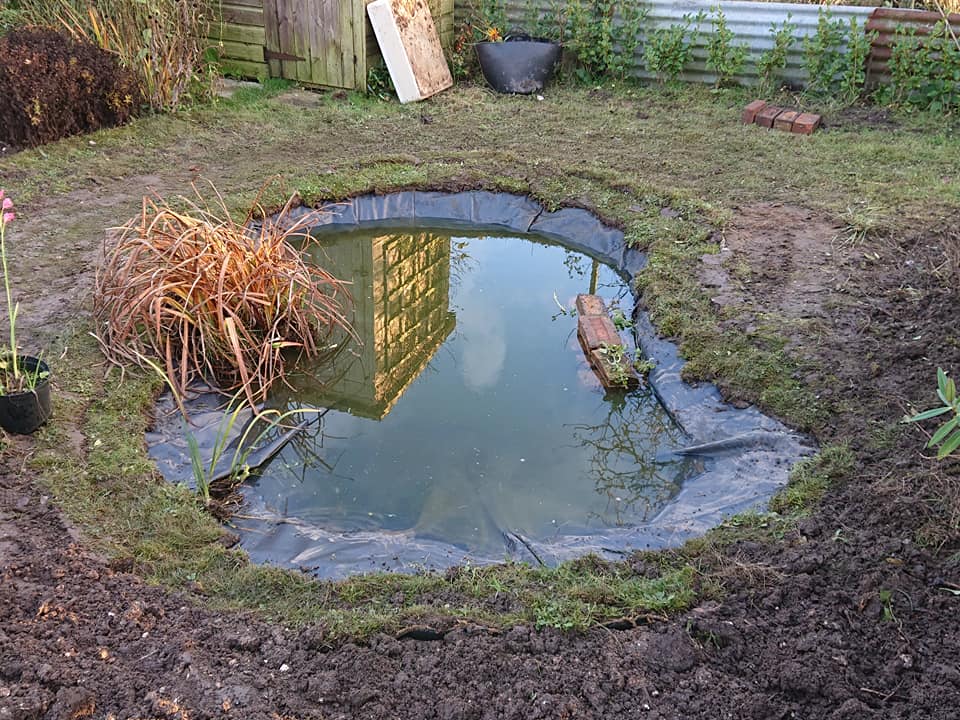
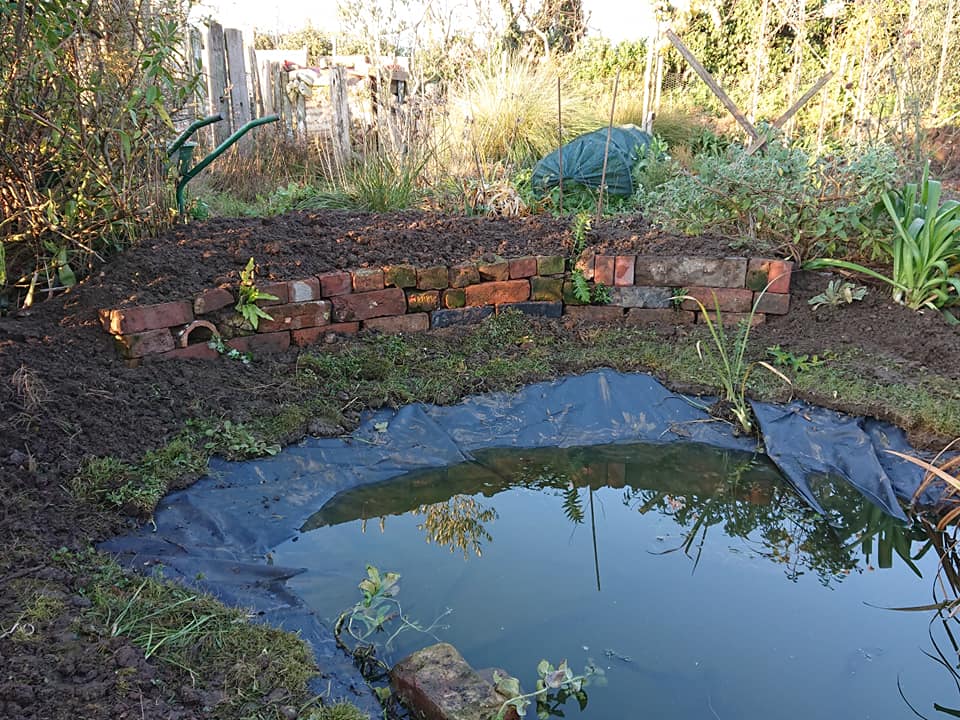

(images copyright Andrew Slater)
8. You may decide not to plant your pond and wait to see what turns up. Or as Andrew has done you can transfer native species from a local area (check you have land owners' permission first).
Be very careful that you do not introduce invasive non native species such as New Zealand Pigmyweed/Australian stonecrop (Crassula helmsii), Fairy Fern (Azolla filiculoides), Floating Pennywort (Hydrocotyle ranunculoides), Parrots' Feather (Myriophyllum aquaticum), Curly-leaved waterweed (Lagarosiphon major). There is more information about these on the Be Plant Wise web page of the GB non native species secretariat.
We would also steer clear of a very robust plant such as bulrush, or yellow flag which can rapidly dominate a small pond.
Native plants you could consider are:
Native marginal/emergent plants
- Flowering rush (Butomus umbellatus)
- Marsh marigold (Caltha palustris)
- Yellow flag iris (Iris pseudacorus)
- Bogbean (Menyanthes trifoliata)
- Ragged robin (Lychnis flos-cuculi)
- Water mint (Mentha aquatica)
- Marsh cinquefoil (Potentilla palustris)
- Brooklime (Veronica beccabunga)
- Water lobelia (Lobelia dortmanna)
- Arrowhead (Sagittaria sagittifolia)
- Common water-plantain (Alisma plantago-aquatica)
Native oxygenating plants
- Curled pondweed (Potamogeton crispus)
- Perfoliate pondweed (Potamogeton perfoliatus)
- Lesser pondweed (Potamogeton pusillus)
- Spike Water milfoil (Myriophyllum spicatum)
Native floating plants
- Yellow water lily (Nuphar lutea)
- White water lily (Nymphaea alba)
- Broad leaved pondweed (Potamogeton natans)
9. We do not recommend introducing any invertebrates or amphibians to your pond. If conditions are correct then they will come under their own steam, and many new pond owners are delighted to see frogs spawning in their first spring. For biosecurity reasons we do not recommend transferring any amphibians, including spawn/eggs, tadpoles or adults around. There are a number of highly virulent diseases including Rana virus, and Chytrid, and we are working hard to ensure that these are not spread. For more information on this please refer to pdf ARG UK Advice Note 4 (186 KB) .
10. Never put purchased or exotic amphibians in a garden or allotment pond - they may carry diseases, and this is how we think Batrachochytrium salamandrivorans (Bsal) derived from far eastern salamanders came to infect wild fire salamanders in the Netherlands and Belgium.
11. The area around the pond will be managed as meadow-type grassland with the introduction of native grassland species using seed and seedlings transferred from grassland already established elsewhere on the allotment. This compartment is approximate 30m2 and adjoins the first habitat area created in 2012. A south-facing, open-jointed brick wall has been constructed on the northern edge to retain a low bank made from some of the excavated topsoil. Excess topsoil will be spread on the productive areas of the allotment.
12. The creation of habitat areas commenced in October 2012 with installation of a very small (reclaimed) pre-formed rigid plastic pond and the construction of a south-facing bank created from rubble and chalk and subsoil excavated for this first pond. Approximately 16m2 of native dry/neutral grassland plant species were sown using wild collected seed, which provided a core area and seed source for subsequent areas. This initial dry grassland area was extended in October 2015 adding a further 16m2 of habitat and a similar area of existing grassland under some fruit trees was also bought into management. These areas connected to the 30 metre long northern boundary hedge and south-facing bank which was also renovated at this time. Excessive growth of ivy which had killed several old blackthorn and hawthorn trees was cut back and new hedge plants planted to fill in gaps, improving shelter and maintaining a locally warmer microclimate. Part of the renovated bank was retained by constructing a south facing dry-brick and rubble-backed wall providing further variation of habitat.
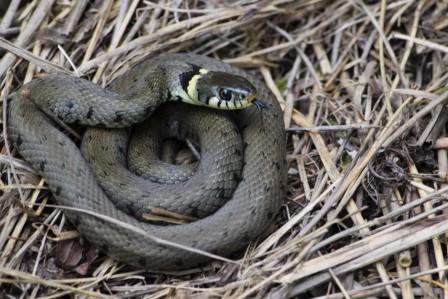
It is hoped that this new, larger pond may attract grass snakea in due course. Purpose-built grass-snake egg-laying heaps will be constructed in the spring.
Andrew Slater.
Fakenham, Norfolk.
December 2019

